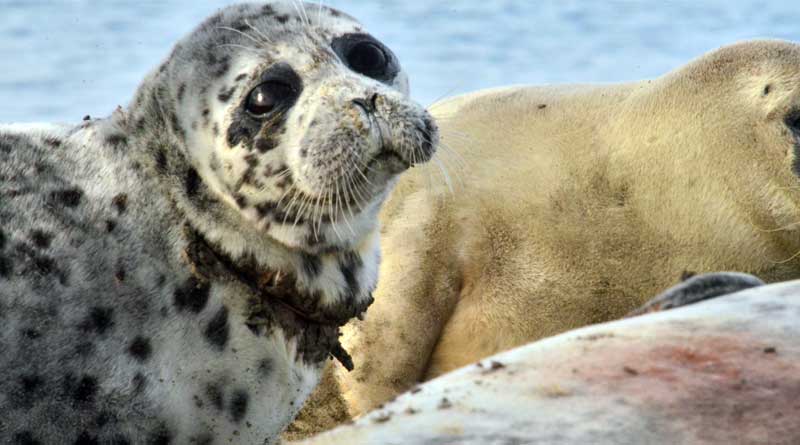Sea of fishing nets and garbage
The film is about the Caspian and how thoughtlessly people pollute it, leaving no chance in surviving for its inhabitants – sturgeons and Caspian seals. The Caspian is literally tightened with fishing nets. About half of them with meshes of over 10 centimeters are intended for sturgeon fishing. The vast majority of nets with smaller meshes are made of synthetic monofilament fabric. Such fishing gears are very cheap, but they quickly become unusable, and fishermen leave them at sea. Exposed and abandoned fishing net is very dangerous to Caspian seals. Thousands seals entangled or injured with fishing gears die annually.
In the autumn of 2019, the filmmakers – researchers from the Institute of Hydrobiology and Ecology and the Eco Mangistau NGO – monitored the coast of the Tub-Karagan Peninsula, in the area of the General Dacha and the villages of Bautino, Fort Shevchenko and Kyzyl Ozen.
About 6.5 tons of sea trash and over 400 fishing nets were collected by participants in the expedition on the coast of 55 kilometers in length and 50-100 meters in width. In every tenth fishing net was a dead Caspian seal. The film tells other problems associated with the negative impact of garbage on the Caspian ecosystem.
(For subtitles in English, please, click CC button in the lower right corner of the frame).
In 2020, the second part was filmed about an expedition to collect abandoned fishing nets on Tulenyi Islands (the Seals’ Islands) – Podgorny Island, Rybachy Island, Morskoy Island and Kulaly Island – and the adjacent water area to them. The Seals’ Islands are of great importance for the conservation of the historically important habitat of the Caspian seal. It is not for nothing that these islands are called “Seals’”. Previously, hundreds of thousands of seals lay on these islands, but due to fishing and shipping, these islands have no longer visited by seals.
IE “Kutskevich”, IE “EcoWasteAktau” and the Eco Mangistau NGO took part in the expedition. The research was carried out as part of the Program for Conservation of the Caspian seal population, under support of Tengizchevroil LLP.
Photo by Mirgaliy Baimukonov, the Director of the Institute of Hydrobiology and Ecology (Irgely, Kazakhstan). Caspian seals, Kendirly, spring, 2017.

